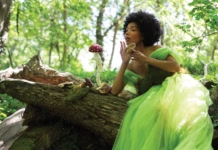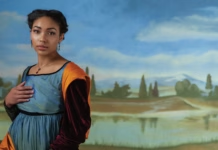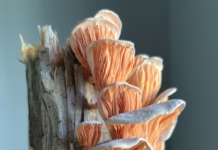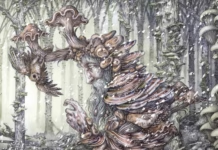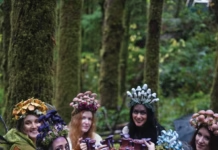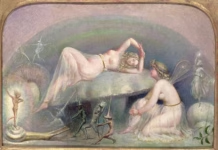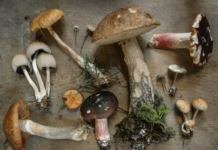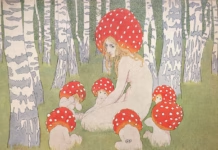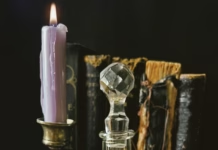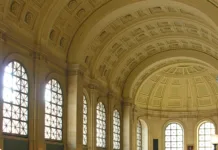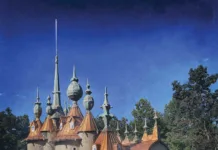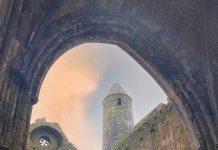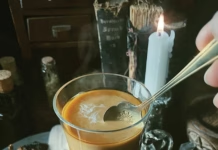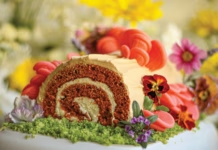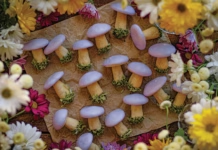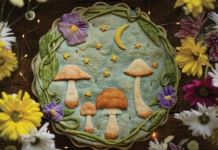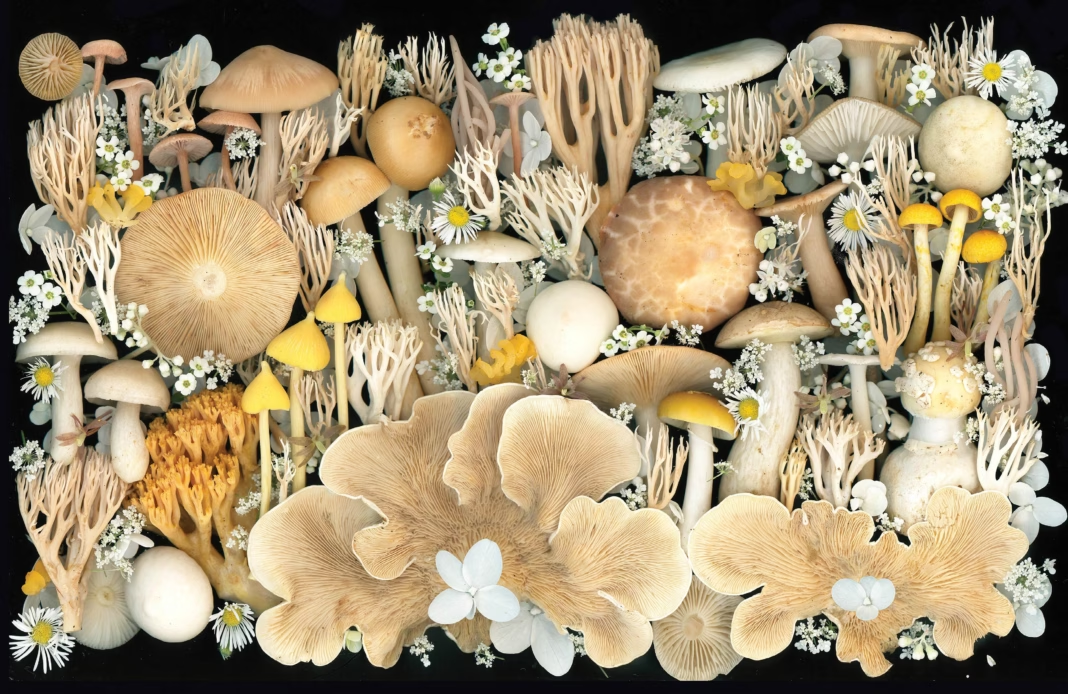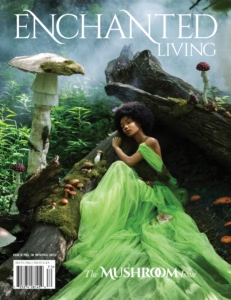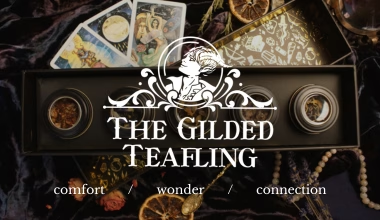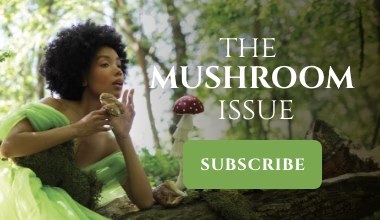Nature collage combines everything I’m most passionate about: the outdoors, working with organic materials, the ephemerality of those materials, and beautiful composition that’s pleasing to the eye and other senses.
I’ve always felt called to the forest, and I’ve made art of one kind or another for as long as I can remember. I grew up around Raleigh, North Carolina, and moved west to Asheville to attend Warren Wilson College. I studied all kinds of art, including photography. After, I owned a landscaping company where I used plants and rocks in large format design to beautify a person’s yard. At some point, I became aware of the work of English artist Andy Goldsworthy, who makes giant art installations from natural materials.
That, I thought. Yes! That’s what I want to do.
I started collecting acorns, berries, foliage, other flora, and the occasional wasp’s nest or bone from the southern Appalachian forest that begins just steps from my back door. I assembled the pieces into flat lays—outdoors, usually on lichenous stumps or some stunning bank of moss—that I could photograph before taking them apart again. I began posting my work on Instagram and discovered the creations of other nature artists online.
I noticed how many of them incorporated mushrooms—which surprised me. I’d thought that by the unwritten code of nature artists I could take only what I found loose on the ground. Then I learned that mushrooms are just the fruiting bodies of a much larger organism that exists under the soil or within a decaying branch, and that it’s legal to gather them in our national forests. When you cut one off, it can still spread its spores. I had no idea!
Once I used mushrooms in my work, everything changed. And once I saw them, I saw them everywhere. I was blown away: I’d had no idea of the array of colors and textures and shapes. The coral fungi, cup fungi, polypores growing on the sides of trees … I literally fell in love. I joined my local branch of the North American Mycological Association, read field guides specific to my area, and met other mushroom lovers. Mushrooms are plentiful in the southern Appalachian Mountains—anyone can find them. A person only needs to be willing to walk slowly in the woods. In July or August, a few steps in will reveal a cluster of blaze orange chanterelles. A few more steps and there are sizable boletes. Russulas and Amanitas of every color of the rainbow are scattered throughout.

They changed my art—and in many ways they
are what made collage the perfect art medium for me. As an artist in general, it can be hard sometimes to devote the time to your work or to finish a piece. But the minute you cut a mushroom you put a ticking clock on it. You really have only a day or two before it degrades, especially in the summer’s humidity and heat.
So I might find a breathtaking variety of mushrooms along with some flora in a one- or two-day span. I’ll supplement them with other, more durable finds—like nests or skulls or acorns. I’ll arrange them quickly somewhere outside. I’ve invested in a good camera, which strangely enough helps me see because it helps me focus on small areas. Sometimes I’ll rearrange based on what appears in the lens. And then, once
I’ve captured what I want, I’ll take the artwork apart again. I always pick out the edible mushrooms and sauté them for dinner, and leave the rest outside to spread their spores.
By collecting, cleaning, and working with these temporal beauties, I deepen my love of the woods— and every collage I assemble celebrates that connection.
Postscript: As you probably know, the southern Appalachian Mountains, and particularly my home area of western North Carolina, have been dealt a terrible blow. In late September 2024, a weather system dropped rain over us for two days straight before the last remnants of Hurricane Helene hit our area. The
combination of rain, wind, and topography led to previously unseen flooding, thousands of trees down, landslides, and destruction
of municipal infrastructure as well as landscape. Yet slowly but surely, we are rebuilding. This area has always relied upon robust tourism. We lost much of that last year. But while there were pockets of devastation, much of the area is just as it was before the storm. There are still mountains to climb, rivers to raft, art galleries to peruse, restaurants to dine in, and mushrooms to find. Please come see us!
Find more of Heather Brooks’s art at smallwoodlandthings.com and follow her on Instagram @smallwoodlandthings.




